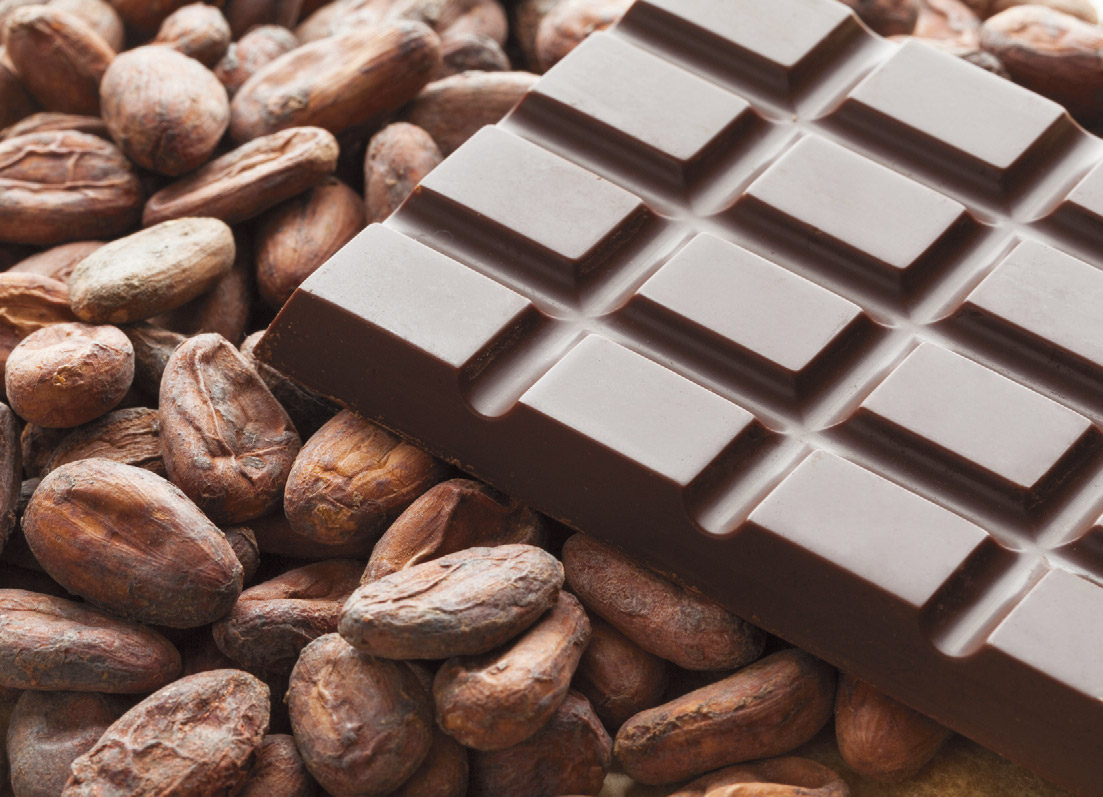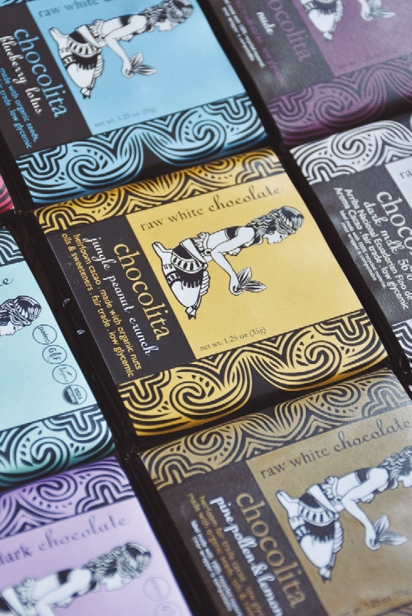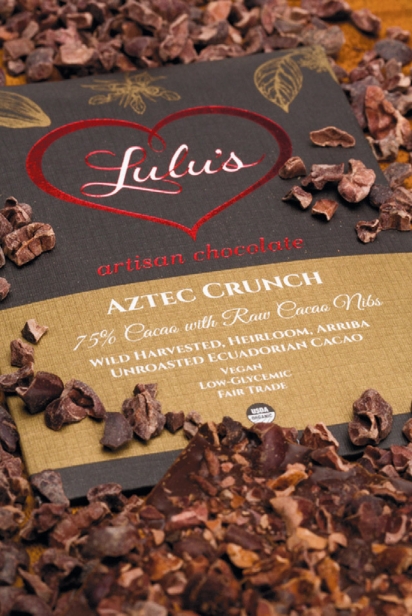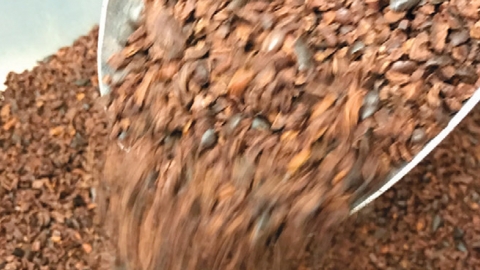Tasting Artisan Chocolate, in Arizona
Chocolate lovers, rejoice. A new world of taste exploration has opened up with the advent of small-batch, handcrafted chocolate making in Arizona. These new chocolate artisans, also called “chocolatiers,” focus on using single-origin cacao beans to introduce a range of unique flavors, health benefits and inspired confectionery.
Like the coffee renaissance of 30 years ago, the new style of cacao preparation focuses on and celebrates single-origin beans—those grown in one region of a particular country.
Sampling single-origin chocolate is a rich adventure in variety, depth and nuance of taste. Cacao trees grow only in a narrow geographic belt 20° to 22° north and south of the equator. There are three main categories of chocolate, but as many as 10 genetic variations within these categories. Each type has its own characteristics that vary with the season, fermentation time and roasting time. This quality of “terroir” is exactly what the new wave chocolatiers wish to highlight in their confectionery.
Most new chocolatiers select premium beans from small producers, or co-ops, which they process themselves. This means sorting, roasting, grinding, winnowing, conching and tempering before the chocolate is ready to eat. Others start with the raw paste product that results midway through the process after grinding the beans, and proceed from there to create a selection of finished products. Many artisans prefer a lighter roast of the beans than do large commercial companies, to allow the individual flavors of the cacao bean varieties to be expressed more distinctly.
Additionally, the chocolate maker might blend bean varieties to achieve particular taste profiles, then add vanilla, herbs or more cocoa butter, creating as many variations in taste profiles as there are chocolate artisans.
I decided to try two different styles of chocolate from three different local boutique chocolatiers for the tasting. Plain bars with 60–80% cacao content offer the best tasting experience. This high percentage of cacao ensures the best balance of cocoa and cocoa butter. The higher the cocoa content, the denser the texture and the more tender the bite, smooth mouthfeel and unctuousness characteristic of good chocolate.
From the internet I chose a couple of “flavor profile wheels” to guide me during the chocolate tasting. The flavor descriptions on the wheels varied from floral, fruity, nutty, citrus, earthy and honey to leather, tobacco, mushroom, butterscotch, winey, tea and so on.
I begin my taste exploration at Zak’s Chocolate in Scottsdale. Zak’s is a “bean to bar” operation that follows traditional European artisan chocolate-making techniques. Owners Jim and Maureen Elitzak source their single-origin, organic and fair-trade beans from several countries. They offer both single-origin bars and drops, their own bean blends and fine chocolate confections.
Arriving in 50-pound sacks, the beans are already fermented and dried when they are delivered to Zak’s. The in-house chocolate-making process starts with sorting the beans, discarding any twigs, leaves or damaged beans.
In a formal tasting, we start with a freshly roasted whole bean with the husk still on it. It is crispy and crumbly like a toasted nut, with a mildly tangy chocolate taste, and slight bitterness. We then taste the chocolate liquor that is produced further along in the process by grinding the crushed beans. The low heat created in this step melts the chocolate. Without any sugar or flavoring it tastes tangy and a little bitter, with an exquisite, creamy mouthfeel, as in a rich chocolate sauce. At this point, the sugar and any extra cocoa butter is added and the chocolate is churned for many hours to melt and incorporate the sugar.
We taste three of Zak’s finished chocolates, all 70% cacao: one from Madagascar, one from Belize and one from Nicaragua. The Madagascar, to my palate, has many nuances, including dried cherry, wine and almond. The flavors develop as the chocolate rolls and melts over my tongue.
The Belize has notes of coffee, vanilla and earth—maybe even mushroom.
The single-variety Matagalpa from Nicaragua proves to be quite distinctive in taste. It is less tangy than the other two, with notes of caramel, and a bourbon-like sweet aftertaste.
The sampling represents only three of their offerings, so really the taste experiences are endless! For flavored chocolates, Zak’s won a bronze medal for their Peruvian San Mateo chocolate at the International Chocolate Competition. It is 55% cacao, with some milk and spices added for a Chai flavor profile.
Two other chocolates I sample are made in Sedona, one by Chocolita, the other by Lulu’s. Both these chocolate makers use a chocolate paste derived from organic and fair-trade single-origin Ecuadorian beans of high quality from small producers.
Both chocolates are described as “raw” because the beans used to make the paste have not been roasted. The raw chocolate paste is lightly sweetened with coconut sugar, which is lowglycemic and acceptable for diabetics, Paleo eaters and others who avoid processed cane sugar and other sweeteners.
With a nod to the sacred status of chocolate among the original Olmec, Mayan and Aztec chocolate eaters, Chocolita and Lulu strive to produce a chocolate that is a true food, a wholesome and invigorating, healthful product. Their raw product is designed to preserve not only the naturally occurring flavors, which are altered by roasting, but also the nutritional attributes of the raw fats and lipids of the cocoa butter. The results yield a product of special nutritional integrity and a pure but nuanced flavor. “Our passion is to bridge the gap between gourmet and truly healthy,” is the statement on Lulu’s Midnight Velvet bar.
The subtle taste profile of “raw” chocolate becomes a palette for creative flavor pairings. One interesting flavor combination from Chocolita incorporates pine pollen and lemon, for a truly unique and pleasant taste. Other Chocolita pairings include blueberry and white chocolate, Jungle Peanut, chisandra berry and strawberry, which proved to be a favorite in my tasting group.
Lulu’s Midnight Velvet dark chocolate bar has a higher percentage of cacao content, (88% compared to 80% in the Chocolita) and is flavored with vanilla and salt. The higher cocoa content adds a snap to the bar, but the mouthfeel is still creamy. This chocolate has a succession of flavors that develop across the palate as it melts: salt, deep cocoa, dry fig, vanilla.
Lulu’s also offers a vanilla-flavored Raw Love bar, a maca-infused bar, (maca, an Andean root, is claimed to be an aphrodisiac), a hemp oil–infused bar and Aztec Crunch with cocoa nibs, among other flavors.
Like most foods, chocolate has a harvest season. So not every variety may be available all year. Part of the fun of exploring is to try the different varieties as the seasons allow. A good chocolatier will know how to blend and create terrific flavor combinations no matter what bean is available.
Joining a chocolate tasting is fun. The gentle dopamine and seratonin high creates a lively mood and good spirits. And because pure chocolate is a healthy food, one can relish it without guilt.
Maybe chocolate is the new wine? Enjoy!
Taste for Yourself
Zak’s Chocolate
6990 E. Shea Blvd. Ste. 116
Scottsdale, AZ
480-607-6581
zakschocolate.com
Special tasting and chocolate-making classes available.
Lulu’s Chocolate Lounge
2301 W. State Route 89A, Ste. 106
Sedona, AZ
928-554-1189
luluschocolatelove.com
Chocolita
Available at Lulu's Chocolate Lounge, online and at select stores.
chocolita.com
Commercial Chocolate in America
Artisanal chocolate making has always flourished in Europe, and in the mid-19th century was more common in the United States. However, with a few exceptions, chocolate making here in the States has been dominated by large industrial producers. In the 1800s food giants such as Hershey developed machinery to process massive amounts of cacao at a time, saving labor and production costs and ensuring a final product of relatively uniform taste and texture that the consumer has come to rely on.
The established practice of bulk production is to dark-roast the beans. This serves to mask the naturally occurring flavor variations of cacao and, similar to dark-roasted coffee beans, yields a more bitter taste, that is tempered and/or enhanced with milk, sugar and other flavorings.









